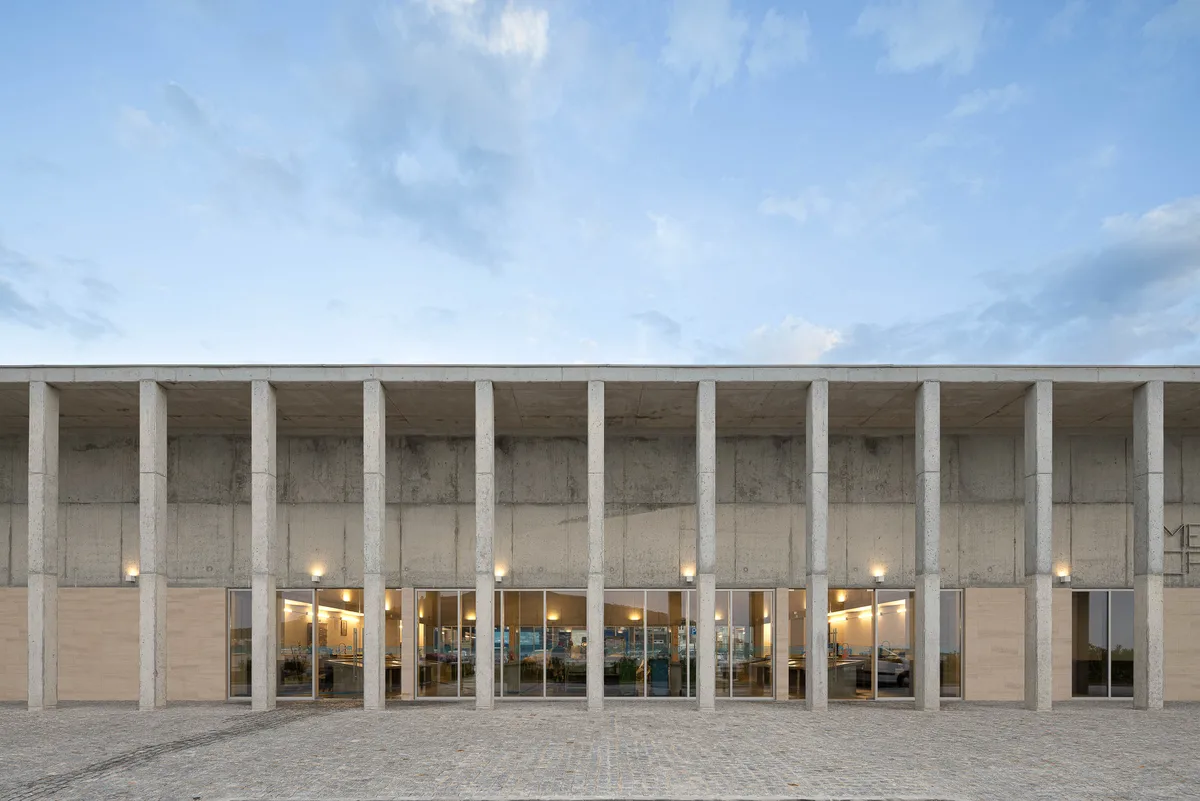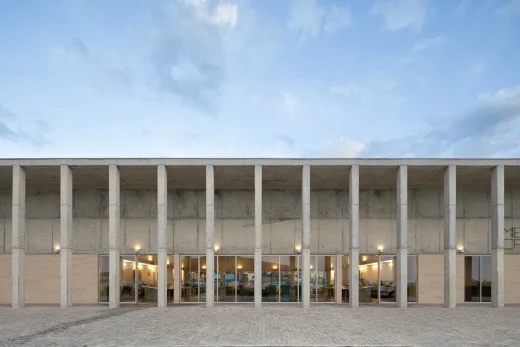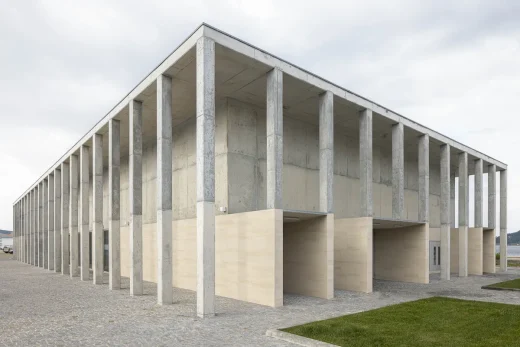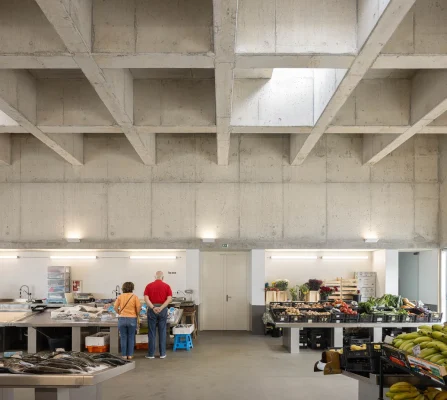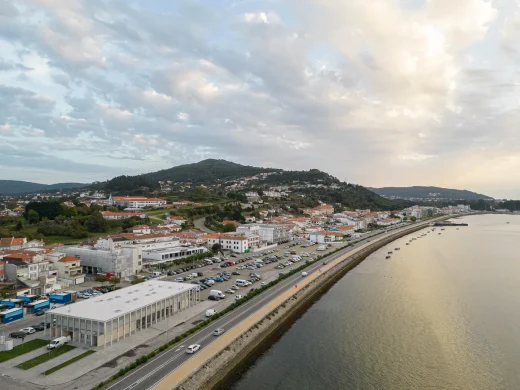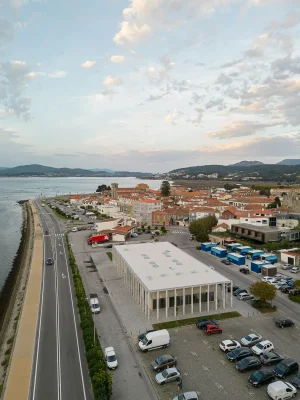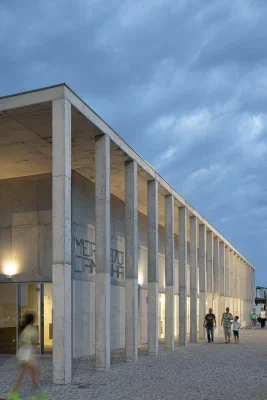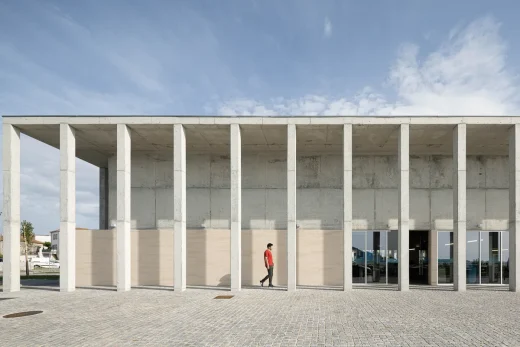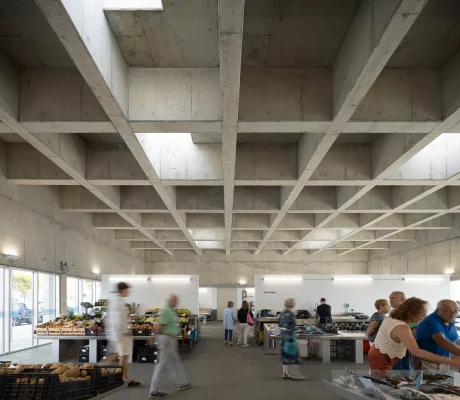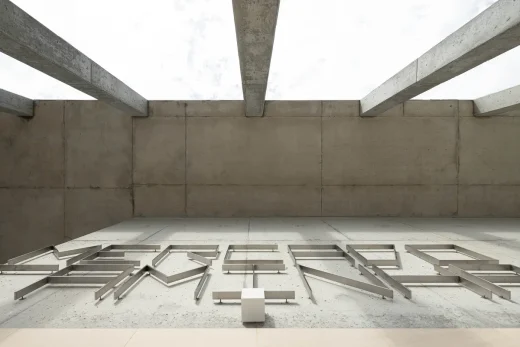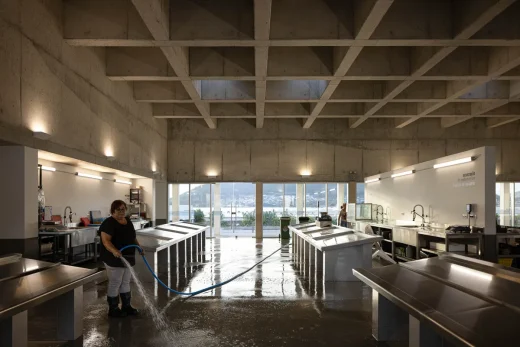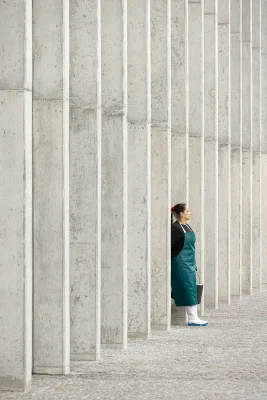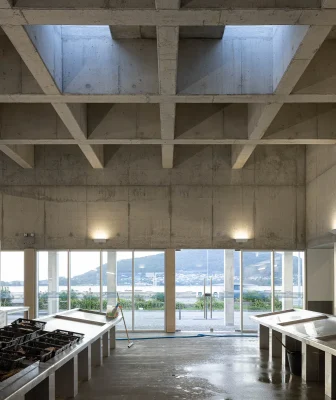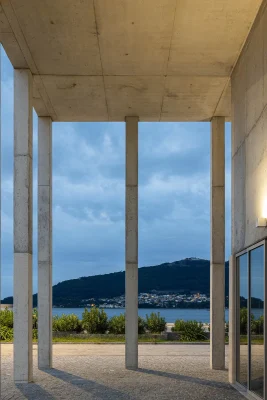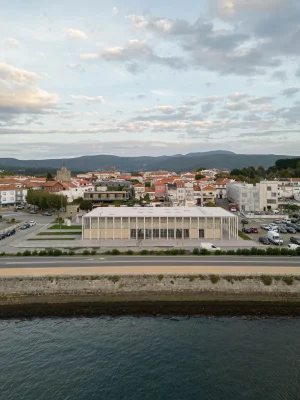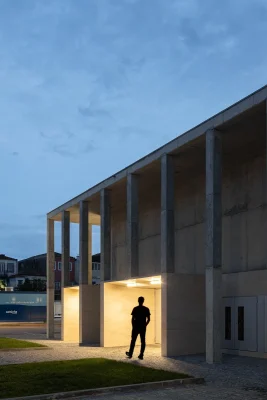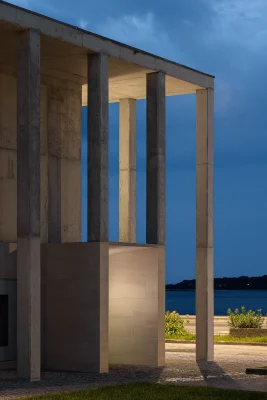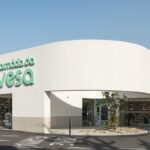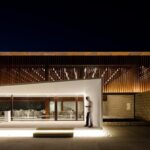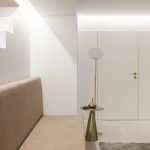The Market, Caminha, North West Portugal, Modern Portuguese building photos, Commercial development architecture
The Market, Caminha, North West Portugal
30 August 2024
Architecture Office: LOFTSPACE e TIAGO SOUSA
Location: Caminha, North Portugal
Photos by Ivo Tavares Studio
English text (scroll down for Portuguese):
The Market, Portugal
The market is a point of exchange, buying and selling, a meeting point, or even, nowadays, a point of cultural interest.
In these polyvalences of functions and definitions, it is concluded that the market, when functional, is a point of reference in a place. It is thus, in the importance of function, form or scale that urban space is designed and constructed.
The current Caminha market is not integrated into the site nor does it stand out due to its function.
It appears as a construction adulterated by time and necessity. It is provisional, which seeks to respond to the needs of its Market function. With structural problems, theorization and wear of the coverings, with temporary solutions for the wear of the roof, they raise problems in complying with the program, in complying with accessibility, in complying with hygiene, safety, fire safety regulations or in compliance with use.
It is a building that requires constant maintenance in an attempt to correct problems that arise from the rigors of the seasons and time. Under these conditions, we consider that demolishing the entire building will be the most economical and viable option.
The new market arises from the analysis of the site and function.
It fits into the location with a strong dialogue with the natural and urban landscape, but never neglecting the importance of the town’s existing flows.
The site, Square Pontaut Combault, portrays an urban void, with different confrontations: the urban fabric to the east, the empty market to the south and the Minho riverfront to the west.
We intend for the proposed building to relate them through its location, form or programmatic organization. The public’s interest is captured by its homogeneous, rational and serene form, as well as by the materialization of color and light. With a paralelepipedal volume, with straight lines, the volume appears surrounded by a rigid structure of pillars, thus composing an external gallery of “protection” for users.
All this rigidity represents for us the strength that a public building must have in the mesh, which, in turn, is broken by the movement created by the games of light/dark and light/shadow. This movement gives us different perspectives on volume throughout the day.
The entire volume is made of concrete. Resistant, with a “strength”, functional or “cold” character, it is contrasted by the Molianos stone cladding, yellow, noble and “warm” on the base. It is thus, on the scale of man and materials, that the project embraces the nobility and reference of a village as picturesque as Caminha.
In the union of form, function, scale and materialization we reconcile a set of premises for relationships with the environment and the individual. We do not turn our backs on the waterfront, we care about the fair’s relationship and ensure that the entrance is directed to the village, as is the case.
We conclude that the more technical area should be related to a new square created to the north, a square that frees the market from the neighboring building, as well as opening the horizon to existing equipment in the urban fabric.
Given the current lack of this interior-exterior relationship, the relationship between the volume and the surroundings, we designed a simple volume with transparent planes that invite the user to enter or, when inside, to enjoy the view.
It is the scale of man, at ground level that the transparent elements allow us to glimpse the function and life inside the volume from the outside. It is these moments that project natural lighting into the interior and create visual relationships with the two surrounding realities, namely the town and the riverbank of the Minho River.
The interior of the building is covered with washable and waterproof epoxy paint up to the height of the openings (two and a half meters) on all interior walls, allowing for effective hygiene. This visual line created by the exchange of materials is evident throughout the volume, both outside and inside, thus creating a feeling of elegance and lightness.
The interior space is organized into three sections: one to the south with shops with exterior and interior access and sanitary facilities, a central public area – fish and fruit market -, and a technical and restricted area to the north. The northern, technical section is made up of changing rooms, an area with (individual) cold rooms, administrative space and an outdoor space for waste. The latter, physically separated from the others, is accessible via an independent route. It is an act isolated from all loading and unloading moments or access to the building.
The staff space creates the hinge between public and private. The changing rooms, as well as the cold storage rooms, have autonomous routes and exits, without any intersection with the circulation of the general public. Administration is related to the sales space.
To the south, the front elevation is made up of four autonomous commercial spaces, but all with direct access to the interior of the market and common sanitary facilities. Here, there is the possibility of closing commercial spaces’ access to the market depending on each person’s schedule.
The central space, the market, is the space and use that dignifies the volume. A large space, with high ceilings and a “monumental” scale, is deeply bathed in natural light and views of the transparent planes of the elevations. This is where the primary act of the program unfolds. This is the meeting point for users. By being flooded with natural light, varied by the position of the sun throughout the day, an emotional and dynamic scenario typical of the market image and experience is created.
Portuguese text:
O mercado,
O mercado é ponto de troca, compra e venda, ponto de encontro, ou até, hoje em dia, ponto de interesse cultural.
Nestas polivalências de funções e definições, conclui-se que o mercado, quando funcional, é ponto de referência num lugar. É assim, na importância da função, forma ou escala que se desenha e constrói o espaço urbano.
O mercado de Caminha atual não se integra no sítio nem se destaca pela função.
Mostra-se como uma construção adulterada pelo tempo e pela necessidade. Apresenta-se provisório, o qual procura responder às necessidades da sua função de Mercado. Com problemas estruturais, de teorização e desgaste dos revestimentos, com soluções provisórias para o desgaste da cobertura, suscitam problemas no cumprimento do programa, no cumprimento das acessibilidades, no cumprimento de normativas de higiene, segurança, segurança contra incêndios ou no cumprimento do uso.
É um edifício que exige manutenção constante na tentativa de corrigir os problemas que surgem do rigor das estações e do tempo. Nestas condições, consideramos que a demolição parcial do edifício, mantendo as fundações, será a opção mais económica e viável.
O novo mercado surge da análise do sítio e da função.
Insere-se no local com um diálogo forte com a paisagem natural, urbana, mas nunca descuidando da importância dos fluxos existentes da vila.
O sítio, Praça Pontaut Combault, retrata um vazio urbano, com distintas confrontações: malha urbana a nascente, vazio da feira a sul e a marginal do rio Minho a poente.
Pretendemos que o edifício proposto as relacione através da implantação, da forma ou da organização programática. O interesse do público é captado pela sua forma homogénea, racional e serena, como também pela materialização da cor e da luz. Com uma volumetria paralelepipedal, de linhas rectas, o volume aparece envolvido por uma estrutura rígida de pilares, compondo assim, uma galeria exterior de “proteção” aos utilizadores.
Toda esta rigidez representa para nós a força que um edifício publico deve ter na malha, que, por sua vez é quebrada pelo movimento criado pelos jogos de claro/escuro e luz/sombra. Este movimento proporciona-nos diferentes perspetivas do volume durante todo o dia.
Todo o volume é em betão. Resistente, com carater de “força”, funcional ou “frio” contrapõe-se o revestimento em pedra molianos, de cor amarela, nobre e “quente” da base. É assim, à escala do homem e de materiais que o projeto acolhe a nobreza e referência de uma vila tão pitoresca como Caminha.
Na união da forma, função, escala e materialização conciliamos um conjunto de premissas de relações com o envolvente e com o individuo. Não voltamos costas à marginal, preocupamo-nos com a relação da feira e asseguramos que a entrada seja direcionada à vila, conforme a existente.
Concluímos, que a zona mais técnica se deva relacionar com uma nova praça criada a norte, praça essa que liberta o mercado do edifício vizinho, como abre o horizonte a equipamentos existentes na malha urbana.
Face a atual inexistência desta relação interior-exterior, da relação do volume com a envolvente, projetamos um volume simples com planos transparentes que convidam o utilizador a entrar ou quando dentro, a disfrutar da vista.
É a escala do homem, à cota térrea que os elementos transparentes permitem vislumbrar do exterior a função e a vida no interior do volume. São estes momentos que projetam iluminação natural no interior e criam relações visuais com as duas realidades circundantes, nomeadamente a Vila e a marginal do rio Minho.
O interior do edifico é revestido a pintura epóxi lavável e impermeável até a altura das aberturas (dois metros e meio) em todas as paredes interiores, permitindo uma higienização eficaz. Esta linha visual posta pela troca de materiais está patente em toda a volumetria, tanto pelo exterior como pelo interior, criando desta forma uma sensação de elegância e leveza.
O espaço interior organiza-se em três secções: uma a sul com lojas de acesso exterior e interior e instalações sanitárias, uma zona publica central – mercado de peixe e frutas -, e uma zona técnica e restrita a norte. A secção a norte, técnica, é composta por balneários, zona de camaras frigoríficas (individuais), espaço administrativo e um espaço exterior para lixos. Este Último, separado fisicamente dos restantes, é acessível por um percurso autónomo. É um ato isolado de túdos os momentos de cargas e descargas ou acessos ao edifício.
O espaço de pessoal cria a charneira entre público e privado. Os balneários, assim como as câmaras frigoríficas, tem percursos e saídas autónomas, sem qualquer cruzamento com a circulação do público em geral. A administração está relacionada com o espaço de venda.
A sul, a frente de alçado é composta por quatro espaços comercial, autónomos, mas todos com acesso direto ao interior do mercado e às instalações sanitárias comuns. Aqui, existe a possibilidade de encerrar o acesso dos espaços comerciais ao mercado consoante os horários de cada um.
O espaço central, o mercado, é o espaço e o uso que dignificam o volume. Espaço amplo, de pé direito alto e escala “monumental” é profundamente banhado pela luz natural e vistas dos planos transparentes dos alçados. É aqui que se desenrola o ato primordial do programa. É aqui o ponto de encontro dos utilizadores. Ao ser inundado pela luz natural, variada pela posição do sol ao longo do dia, cria-se uma encenação emocional e dinâmica própria da imagem e vivência de mercado.
The Market in Caminha, North West Portugal- Property Information
Architecture Office: Mutant Arquitectura & Design – https://www.mutant.pt/
Project name: MERCADO CAMINHA
Architecture Office: LOFTSPACE e TIAGO SOUSA – https://www.instagram.com/tiagosousapc/
Main Architect: RUI CORREIA e TIAGO SOUSA
E-mail: arq.tiagosousa@gmail.com rc.arquiteto@gmail.com
Facebook: https://www.facebook.com/tiagosousapc e https://www.facebook.com/loftspaceprojetos
Location: CAMINHA
Year of conclusion : 2023
Total area: 900m2
Builder : AMC
Engineering: INCASE Lda
Light Design: INCASE Lda
Acoustic Design: INCASE Lda
Fluids Engineering : INCASE Lda
Thermal Engineering: INCASE Lda
Illustrations: TIAGO SOUSA
Interior Design: TIAGO SOUSA e RUI CORREIA
Photographs: Ivo Tavares Studio
Website: www.ivotavares.net
Facebook: www.facebook.com/ivotavaresstudio
Instagram: www.instagram.com/ivotavaresstudio
The Market, Caminha, North West Portugal images / information received 300824
Location: Caminha, Portugal, southwestern Europe
Braga Property
New Homes in Braga
Casa 15
Architects: AM-arqstudio
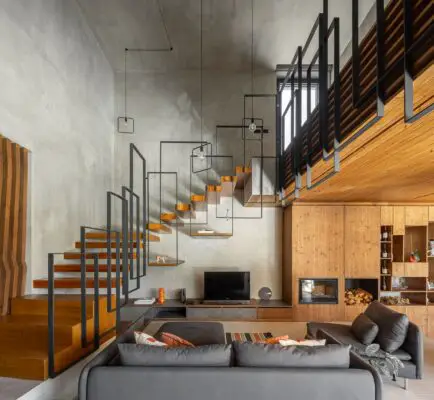
photo : Ivo Tavares Studio
Casa 15 Braga Property
Casa dos Sobreiros, Celorico de Basto
Architects: Hugo Pereira Arquitectos
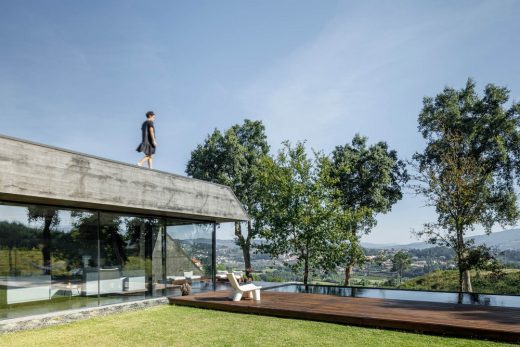
photo : Ivo Tavares Studio
Casa dos Sobreiros, Braga Property
Cork Trees House
Architects: TRAMA arquitetos
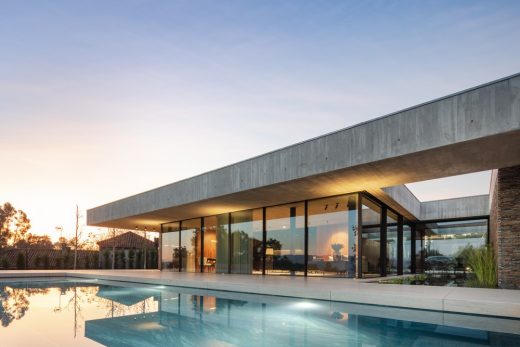
photography : João Morgado
Cork Trees House, Braga
Box XL Houses, Braga, Northern Portugal
Architects: Grupo Zegnea
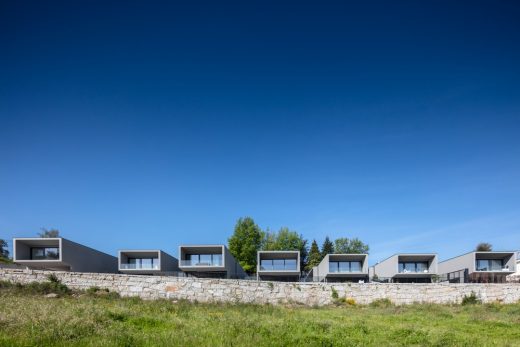
photography © João Morgado
New Houses in Guimarães, Braga
Portuguese Architecture
Portuguese Architecture
Oporto Architecture Walking Tours
GR House, Sever do Vouga, Aveiro
Architect: Paulo Martins
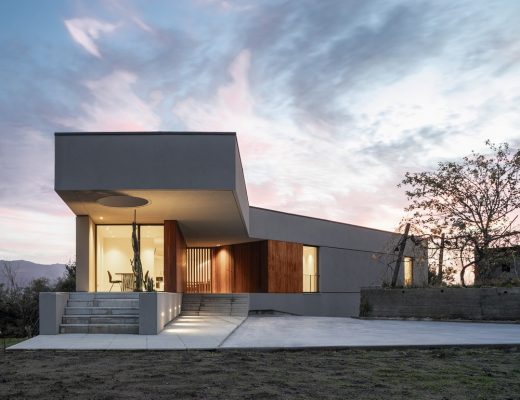
photo ©
House in Sever do Vouga
IF House, Ílhavo, Aveiro
Architects: M2 Senos
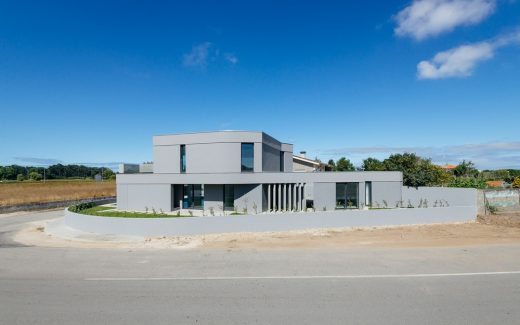
photo © do mal o menos – Eduardo Nascimento
House in Ílhavo
Comments / photos for The Market, Caminha, North West Portugal property design by LOFTSPACE e TIAGO SOUSA page welcome

